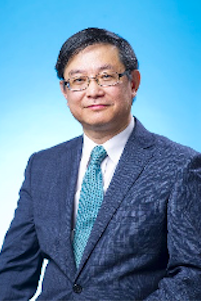Recent development of 2D/3D/4D printing as major tools for materials genome engineering
LU Jian1,2,3,4
1. CityU-Shenzhen Futian Research Institute, Shenzhen 518000, China
2. Greater Bay Joint Division, Shenyang National Laboratory for Materials Science, Shenzhen 518000, China;
3 Center for Advanced Structural Materials, Department of Mechanical Engineering, City University of Hong Kong, Hong Kong 999077, China
4. Branch of National Precious Metals Material Engineering Research Centre, City University of Hong Kong, Hong Kong 999077, China
ABSTRACT: The additive manufacturing is now a fast-growing technology with its applications in a variety of areas such as: biomedical implants, aerospace components and structures. Material genome is another major advancement in the new materials development. Achieving complex-shaped architecture with designed composition especially those with high melting temperature is still challenging. Now additive manufacturing of polymer-derived ceramics enables breakthroughs in geometrical complexity of ceramic structures. This report focuses on solving the problem of applying nanostructured ceramic materials with complex shape. The new concepts of supra-nanostructured materials and nanostructured dual phase (glass-nanocrystal) composites will be presented. The first supra-nanometre-sized dual-phase glass-crystal coatings were fabricated using the PVD process. The obtained supra nanostructured Mg alloy is consist of core of ~6 nm size crystals embedded in 2nm glassy shells. The mechanical property is 10 times higher than the conventional crystal Mg alloys. The second example is a nanostructured glass-nanocrystalline aluminum-based alloys with very high deformation capacity and strength. The potential developments of nanostructured dual phase (glass and nanocrystalline) functional materials with specific biocompatibility or optical property and ultra-high strength can be anticipated. Also, Four-dimensional (4D) printing technology, which combines traditional three-dimensional (3D) printing with structural deformation mechanism, was developed. Meanwhile, the flexibility of the new stretchable ceramic precursors shows great potentials in 4D printing and higher dimensional additive manufacturing. Furthermore, ceramics obtained from these printing techniques have achieved strength-scalability synergy, which broadens high temperature applications of ceramics. The directly 3D printed metallic materials has lower fatigue resistance compared to its counterparts produced by the powder metallurgy technologies including HIP. We will also introduce naturally adaptive metallic structures and their potential application in biomedical implants and post treatment of 3D printed components in Ti alloy to drastically enhance the fatigue resistance. Finally, the perspective of new 2D/3D/4D printing methods with diverse stimulus will be presented.
Keywords:2D/3D/4D printing; supra-nano materials; nanoglasses; mechanical properties
References:
[1] H.N.Kou, J.Lu, Y.Li, High-Strength and High-Ductility Nanostructured and Amorphous Metallic Materials, Advanced Materials, 2014, 26, p5518–5524
[2] Y.F.Ye, Q.Wang, J.Lu, C.T.Liu, Y.Yang, High-entropy alloy: challenges and prospects, Materials Today, Volume: 19, Issue: 6, Pages: 349-362, July-August 2016
[3] G.Wu, K.C.Chan, L.L.Zhu, L.G.Sun, J.Lu, Dual-phase nanostructuring as a route to high strength magnesium alloys, Nature,4th May 2017, Pages: 80-83
[4] G.Liu, Y.Zhao, G.Wu, J.Lu, Origami and 4D printing of elastomer-derived ceramic structures, Science Advances, 17 August 2018;4:eaat0641, pp1-10
[5] A.Banerjee, D.Bernoulli, H.T.Zhang, M.F.Yuen, J.B.Liu, J.C.Dong, F.Ding, J.Lu, M.Dao, WJ.Zhang, Y.Lu, S.Suresh, Ultralarge elastic deformation of nanoscale diamond, Science, 20 April 2018, Vol. 360, Issue 6386, pp. 300-302
[6] Z.Li, P.C.Liu, X.Ji, J.Gong, Y.Hu, W.Wu, X.Wang, H.Q.Peng, R.T.K.Kwok, J.W.Y.Lam, J.Lu L, & B.Z.Tang, Bioinspired Simultaneous Changes in Fluorescence Color, Brightness, and Shape of Hydrogels Enabled by AIEgens, Advanced Materials. 32, 11, 1906493, 5 Feb 2020
[7] L.G.Sun, G.Wu, Q.Wang, J.Lu, Nanostructural metallic materials: Structures and mechanical properties, Materials Today. Vol. 38, p.114-135, Sep 2020
[8] G.Liu, X.F.Zhang, X.LChen, Y.H.He, L.Z.Cheng, M.K.Huo, J.A.Yin, F.Q.Hao, S.Y.Chen, P.Y.Wang, S.H.Yi, L.Wan, Z.Y.Mao, Z.Chen, X.Wang, Z.W.B. Cao, J. Lu, Additive manufacturing of structural materials, Materials Science and Engineering: R: Reports, Vol. 145, July 2021, 100596

Prof. Jian LU, Fellow of the National Academy of Technologies of France, Chair Professor of Mechanical Engineering at City University of Hong Kong (CityU) and President of the Hong Kong Material Reseach Society (HK-MRS). He serve as a member of the Research Grants Council (RGC) of Hong Konk and a member of the Committee on Innovation, Technology and Re- industrialization of the HKSAR. He has successfully served as Dean of College of Science and Engineering, Vice President (Research and Technology) and Dean of Graduate Study at CityU. Prof. Jian LU commenced his undergraduate education in 1978 at Peking University. He obtained the Dip. Ing., Master degree and Doctoral degree from University of Technology of Compiegne in 1984 and 1986 respectively. His research interests are: advanced structural materials, 3D/4D printing and additive manufacturing. During last 30 years, he has served as a Scientific Consultant and collaborator for different worldwide leading (Global 500) companies in the field of Energy (AREVA, Alstom, EDF), Aerospace (EADS, Airbus, SNECMA (Safran), GE), Automobile (Renault, PSA, Volvo, FIAT, NIO) and materials (Baosteel, HydroAluminum). He has published more than 450 journal papers including papers published in top journals of his research fields such as Nature (Cover Story), Science, Nature Materials, Nature Communications, Science Advances and 49 granted patents (including international extension in USA (33), China (12), Europe (4)). His publications have been cited more than 30000 times. He is an Honorary Professor of Northeastern University (China) and University of Science and Technology Beijing. He is an advisory professor of Shanghai Jiaotong University, Xian Jiaotong University, Southwest Jiaotong University and Northwest Polytechnic University. He has received numerous awards and recognitions including French Knight Order of National Merit (Chevalier de l'Ordre National du Mérite) in 2006, French Knight Order of Légion d'Honneur (Chevalier de l'Ordre National de la Légion d'Honneur) in 2017, The Guanghua Engineering Science and Technology Award from the Chinese Academy of Engineering in 2018.